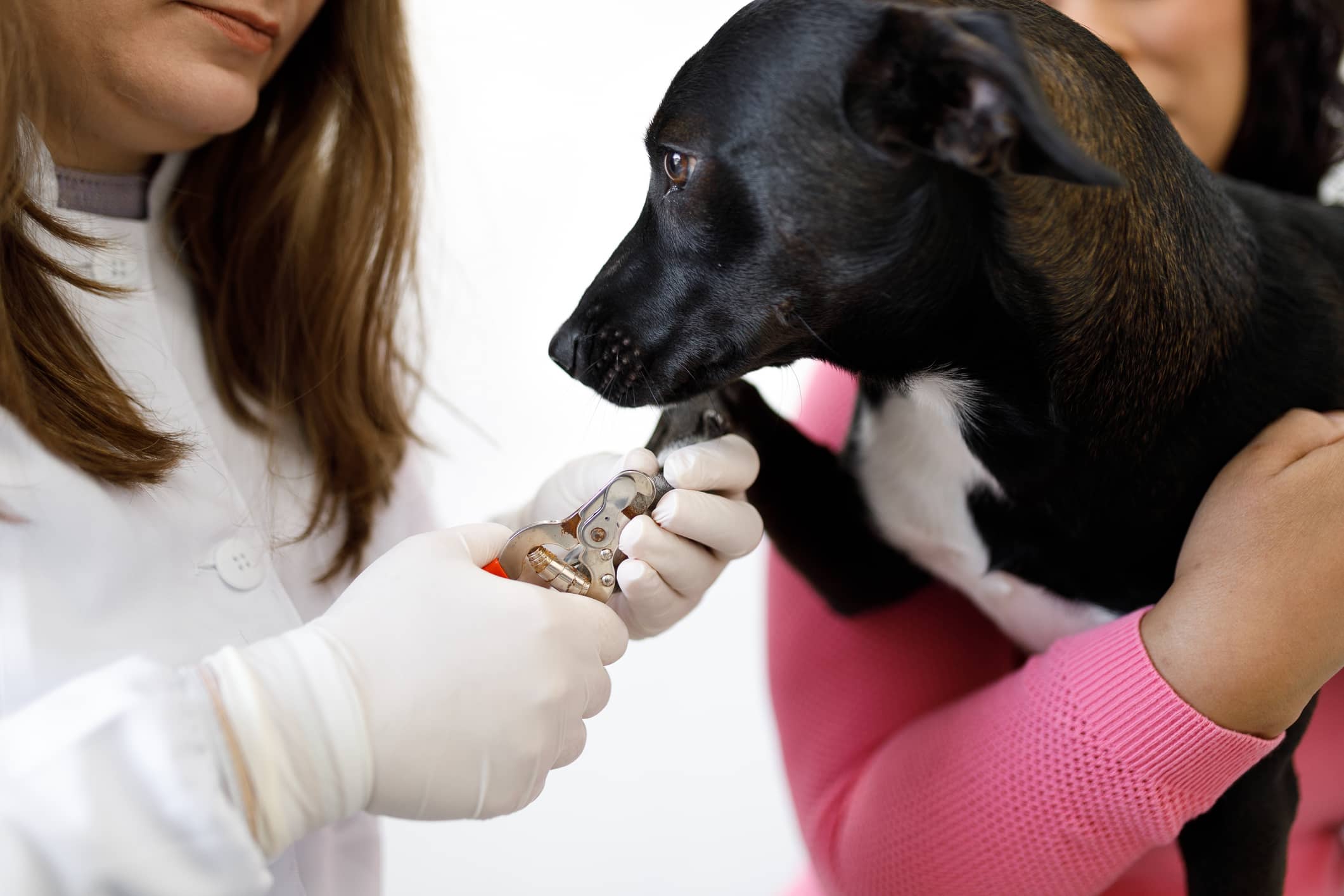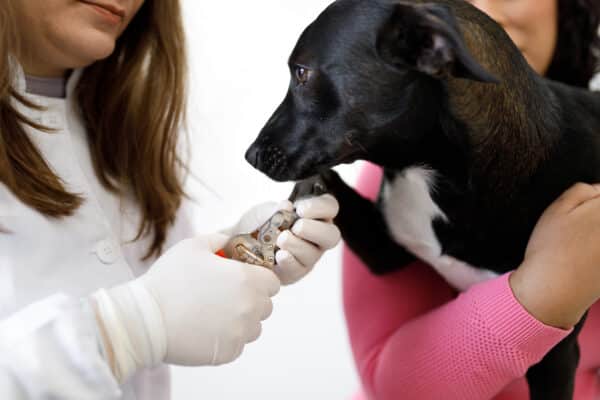I have a Lhasa Apso who absolutely hates her nails
to be cut. I don’t dare take her to a groomer
because she is so bad. I tried a muzzle, but she
gets so stressed out that she starts to cough. Her
tongue starts turning blue. Do you have any
suggestions?
Kellie
Marco Island, FL
First, know that you are not alone. I have many patients who are content to be poked, prodded, played with, tugged, or tickled anywhere but their feet. But when anyone tries to touch their paws, or especially trim their nails, they can’t stand it. I suspect they have ticklish feet. Or perhaps they view their feet as their personal space. Whatever the reason, they will not tolerate having their nails trimmed.
Most dogs and cats need nail trims periodically. Untrimmed nails are more likely to get injured and to cause injury. Severely overgrown nails may get snagged and damaged during play. Very long nails can grow into the pads on the feet, causing infection and pain.
My most important advice goes to people with puppies and kittens. I recommend that you spend time each day playing with your pet’s feet. Start trimming the nails at an early age. Young animals are very pliable, and pets that grow up accustomed to nail trims usually don’t resent them as adults.
For mature pets, there are several tactics that can be employed to facilitate nail trimming. At least two people should be present for nail trims. One person holds the pet while the other trims the nails. The holder should be someone who is confident and someone whom the pet respects. Pets are less likely to struggle if they respect the person holding them. I do not recommend using heavy restraint. It causes stress for all involved, and it can cause injury to pets.
Some pets can be distracted with food, toys, or gentle taps on the head while their nails are trimmed. As well, you can try trimming just a few nails each day for several days.
Expriment with different positions during nail trims. Some animals respond best to lying on their side. Others do better if they are held in the air vertically with their feet facing the person with the nail trimmers. A small number will struggle less if they are standing on the ground.
Some pets may respond to habituation. Spend time each day touching and massaging the feet. Over time, you may be able to work up to trimming the nails.
Unfortunately, there are some pets for whom none of these tricks work. I know, because they come to my office for their nail trims. Veterinarians are the nail trimmers of last resort, and some pets’ nails can’t be trimmed anywhere else. In the most severe cases, I have had to tranquilize or even anesthetize animals to trim their nails. Obviously, this is not Plan A. But for some dogs and cats there is no other choice.
Featured Image Credit: Capuski, Getty Images










